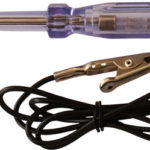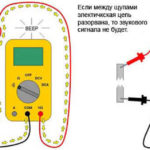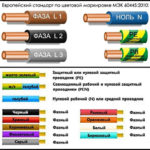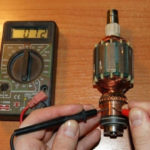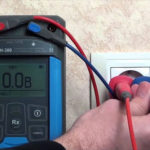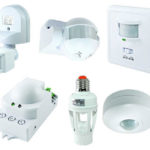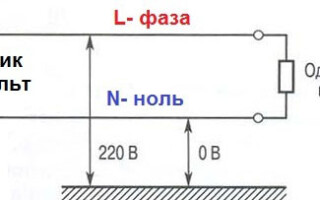When installing sockets switches, household consumers have to deal with the definition of phase and zero in the wiring. If for electricians with experience this task is not a problem, then for those who first touched on this issue, there are many incomprehensible moments. Therefore, it is necessary to figure out how and with what it is possible to identify the phase and zero in the outlet, what is the purpose of the wires and whether it is possible to do without special equipment.
Content
The concepts of zero and phase
Electrical energy in a residential building comes from a transformer substation, the main purpose of which is to convert high voltage, most often to 380 V. Electricity is supplied to houses underground or by air to the introductory switchboard. Then the voltage is supplied to the shields of each entrance. Only one phase with zero enters the apartment from it, i.e. 220V and protective conductor (depends on electrical wiring designs).
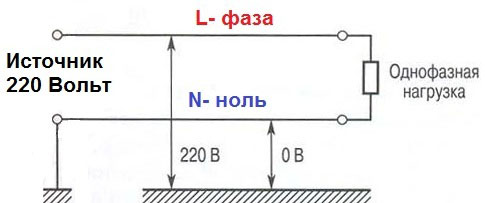
Thus, the conductor that provides current to the consumer is called phase. Inside the transformer, the windings are connected in a star with a common point (neutral), grounded at the substation. It is connected to the load by a separate wire. Zero, which is a common conductor, is designed to reverse the flow of current to the source of electricity. In addition, the neutral wire equalizes the phase voltage, i.e. value between zero and phase.
Ground, often referred to simply as ground, is not connected to voltage. Its purpose is to protect a person from the effects of electric current at the time of a malfunction with the consumer, i.e. during a hull test. This can occur if the insulation of the conductors is damaged and the damaged area of the device case is touched. But since consumers are grounded, when a dangerous voltage occurs on the chassis, grounding draws a dangerous potential to a safe earth potential.
How to determine the phase and zero with an indicator screwdriver
One way to identify where the phase and zero is in the outlet or in the power cable is to use indicator screwdriver. The tool looks like a screwdriver, but inside it has a special filling with an LED. Before proceeding with the measurements, you need to turn off the switch, through which the voltage is supplied to the room. After that, it is required to strip the ends of the tested wires, for which 1.5 cm of insulating material is removed.
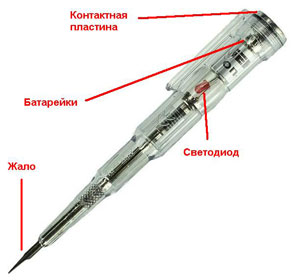
In order to avoid a short circuit between the wires after turning on the machine, they should be directed in different directions.When all the preparatory measures are completed, it is necessary to turn on the automatic machine for supplying voltage. To understand how to find the phase and zero, you must perform the following steps:
- Screwdriver is held between two fingers - medium and large, avoiding touching the bare part of the tool tip.
- The index finger touches the metal tip on the opposite side of the screwdriver.
- The flat end of the indicator alternately touches the stripped conductors.
- When the tester touches the phase, the LED will light up. The second wire will correspond to zero. If there is no indication, initially the conductor will be zero.
How to determine phase and zero with a multimeter
A device that measures voltage, current and resistance is called multimeter. To identify the phase and neutral wires with it, you first need to configure the device, for which the required measurement limit is selected. In the case of digital devices, set 600, 750 or 1000 "~V" or "ACV».
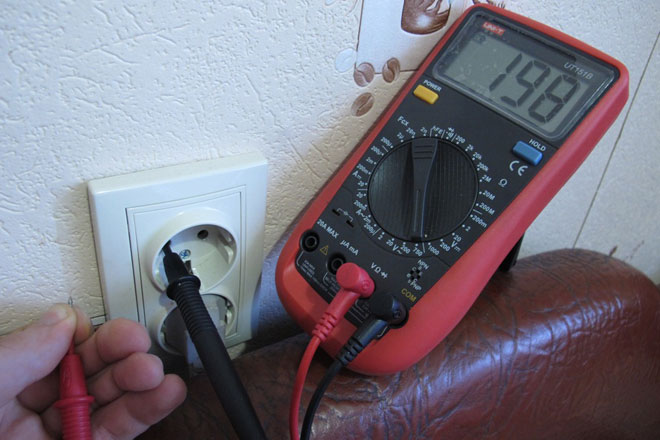
The phase is determined as follows: one of the probes of the device is connected to the contact of the socket or cable, and the second probe is touched by hand. When the display shows a value of about 200 V, this will indicate the presence of a phase. Readings may vary depending on the finish of the floor, shoes, etc. If the device displays zeros or voltage in the range of 5-20 V, then the contact corresponds to zero.
How to determine the phase and zero without instruments
Sometimes there are situations when screwdrivers for determining the phase either multimeter not at hand, but you need to find out which wire corresponds to what.Therefore, you should be guided by the color marking of the wires of the power cable. There is a standard for wire marking IEC 60446-2004, which cable manufacturers must adhere to, as well as electricians who connect one or another electrical fitting.
To determine by wire colorwhich conductor it corresponds to, you must adhere to the following markings:
- blue or cyan - zero;
- brown - phase;
- grounding - green-yellow.
However, the phase wire is not only brown. Often there are other colors, such as white or black, but it will be different from the earth and zero. You can visually identify the wires in the junction box, chandelier and other power points.
There is another option, how to determine where the phase and zero are in the absence of devices. This will require an incandescent lamp with a cartridge and two small pieces of wire. After connecting the conductors to the cartridge, work can begin. The edge of one wire touches the pipes of the heating system, the other - the tested conductors. If at the moment of contact the lamp lights up, then this indicates the presence of a phase. The pipe for such an event must be metal, since plastic does not conduct current.
It should be borne in mind that this method, although it allows you to identify the phase and zero, is dangerous, since there is a high probability of getting an electric shock. Therefore, it is safer to use neon bulbs for the purposes in question.
Similar articles:
